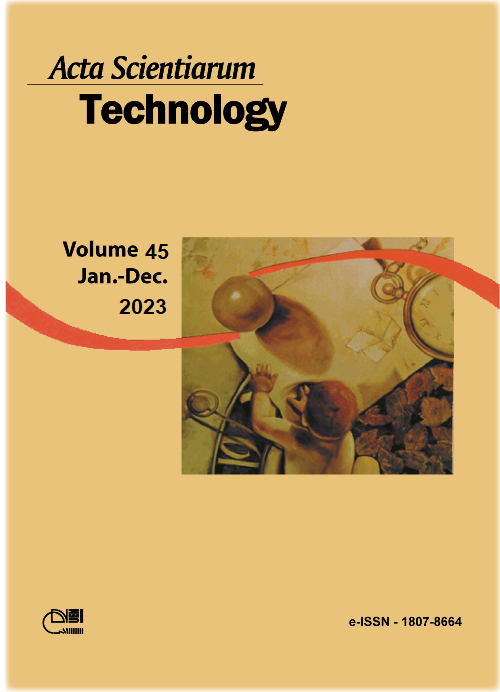Influence of mean value of the modulus of elasticity in compression parallel to the grain on the design of timber trusses
DOI:
https://doi.org/10.4025/actascitechnol.v45i1.58733Keywords:
dicotyledons; mechanical and physical properties; finite element method.Abstract
The Brazilian standard ABNT NBR 7190 (Associação Brasileira de Normas Técnicas [ABNT], 1997) recommends adopting the mean value of the modulus of elasticity to compression in the direction parallel to the grain (Ec0,m) in the calculation of displacements. The values of wood stiffness vary considerably, and they can generate displacements above the limit (L 200-1, where L is the span) established by the referred standard, which contributes to the appearance of pathologies in the structure. To evaluate the influence of the adoption of Ec0,m in the calculation of displacements, mechanical properties of wood species were obtained experimentally. With the aid of numerical models and experimental values, ten types of trusses were analyzed (Porch, Inclined Chord, Top Inclined Chord, Parallel Chord, Bowstring, Fink, Howe, K Truss, Pratt, Scissor), three spans (5, 10, and 20 m) and two species (Hymenolobium petraum Ducke e Hymenolobium sp). Initially, adopting Ec0,m for all members and performing a linear analysis, the maximum loads for the displacement L 200-1 were determined. Subsequently, experimental stiffness values were randomly assigned to each bar, and the maximum displacements were determined through nonlinear geometric analyses. Based on 1260 numerical simulations, deflections of approximately 17% (span of 5 m), 30% (span of 10 m), and 34% (span of 20 m) were observed to be higher than the result considering Ec0,m. This problem can be overcome by using non-destructive methods in the pre-classification of the structure bars, positioning the elements rationally in the regions of the highest demand.
Downloads
References
Downloads
Published
How to Cite
Issue
Section
License
DECLARATION OF ORIGINALITY AND COPYRIGHTS
I Declare that current article is original and has not been submitted for publication, in part or in whole, to any other national or international journal.
The copyrights belong exclusively to the authors. Published content is licensed under Creative Commons Attribution 4.0 (CC BY 4.0) guidelines, which allows sharing (copy and distribution of the material in any medium or format) and adaptation (remix, transform, and build upon the material) for any purpose, even commercially, under the terms of attribution.
Read this link for further information on how to use CC BY 4.0 properly.



















8.png)




